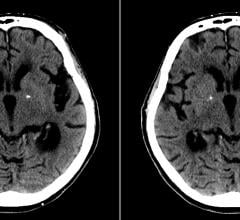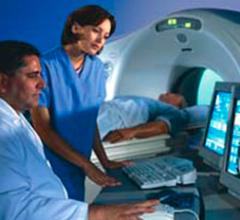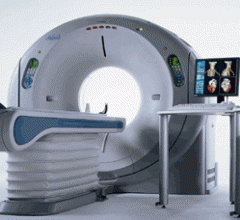Acquiring used equipment carries with it certain stereotypes that span the spectrum of good to bad. Facilities that acquire used equipment either are considered economically savvy or they’re simply picking up a poorly serviced clunker to help them deliver basic service with no ambitions or goals of being a high-end provider.
Sometimes, the stigma is deserved; other times it’s not. Certainly, the pre-owned, secondary or used equipment market segment has broad appeal to budget-conscious or cash-strapped hospitals and outpatient care facilities, but it also retains some baggage by unscrupulous players that infects the perception and reputation of the entire industry.
Further adding to the evaluation and selection challenges healthcare facilities face is the growth in the number of players entering the used equipment market segment. It used to be dominated by independent, third-party service organizations (ISOs) that ranged from reputable national companies to local storefront mom-and-pop-type shops. The formation of the International Association of Medical Equipment Remarketers and Servicers (IAMERS) in 1993 was established to bring order to the madness, ethics and professionalism to the masses and education and information to the buying community.
Within the last decade or so, however, a growing number of original equipment manufacturers (OEMs) have witnessed the growth and popularity of ISOs and recognized the revenue and profit potential they enjoyed. As a result, these OEMs relaxed their historical “always sell new” approach and started embracing secondary market opportunities, offering their own refurbishing, remanufacturing and remarketing operations. Customer service concerns also fueled the fire. If an ISO somehow harmed a piece of equipment during its refurbishment process, the healthcare facility ultimately returned to the OEM to get the job done right. Because the ISO’s efforts typically voided the OEM warranty, a reasonable action nonetheless, OEMs had to deal with the wrath of cost-conscious customers irate about the additional expense. All of this contributed to the dark clouds customers attribute to the used equipment market segment.
Coming to Terms with Confusing Terms
Perhaps the biggest contributor to skepticism about the used equipment market is the terminology defining what vendors actually do. Oftentimes, many of the terms are used interchangeably. And that’s a mistake. Unless a healthcare facility truly understands what the various terms mean, it is likely to be surprised – and possibly – disappointed about what it receives in return.
“Since it is easy to see that there are several terms for used equipment, and everyone seems to have a different definition, Ardus Medical simply uses the word ‘pre-owned’ so there is no confusion,” said Alison J. Hamann, director of Business Development, Ardus Medical Inc. “We sell all equipment patient-ready and with a warranty so that there is little risk involved.”
While the OEMs recognize the variety of terms used in the market, they tend to concentrate on two: “OEM-refurbished” and “used” to distinguish their services from the rest of the industry.
“OEM-refurbished refers to a program that is provided by the original equipment manufacturer, like the Proven Excellence program by Siemens Medical Refurbished Systems,” said Christian Seyler, vice president, Refurbished Systems Division, Siemens Medical Solutions USA Inc. “A previously owned system undergoes a refurbishment process so that it is restored to the same quality as a new system – using original OEM parts, test equipment and procedures. Service coverage, like installation, warranty, applications training and technical service support, is similar to or even the same as for a new system.
“Used equipment, by contrast, is typically moved from the prior locations locally, such as by a third-party dealer, and would not undergo the same OEM refurbishment process. Even though the equipment may be somewhat reconditioned, the key difference is that the process is not done by the OEM,” added Seyler.
Sean Burke, chief marketing officer, Diagnostic Imaging & Services, GE Healthcare, Waukesha, WI, agreed. “[OEM-refurbished] product differs from all others in the field because these systems are guaranteed by the OEM to meet all quality, performance and reliability standards of new systems and, in fact, they come with a full ‘same as new’ factory warranty,” he said.
Motivated by Money
Obviously, the budget remains the primary reason healthcare facilities invest in used equipment. But achieving cost savings and maintaining fiscal responsibility should not be the only determination or motivation. In fact, competitive strategies should play a major role too.
Some of the key issues that should be addressed are the facility’s overall investment strategy for capital equipment and how the equipment will help the facility attract new patients and referring physicians and clinicians, according to Burke.
The healthcare facility also should determine whether the intended procedures it wants to perform with the equipment requires the highest cost model, Seyler noted. Sometimes it doesn’t.
“Some facilities simply just want to replicate the equipment they have in one room as they add additional rooms without spending too much money,” said Bob Mighell, president, World Medical Equipment, Marysville, WA.
Another good reason to investigate used equipment is the possibility that vendors may no longer manufacture the desired equipment, Seyler added.
Hospitals and outpatient care facilities tend to get hung up on the price versus total cost debate, confusing the difference between low price of acquisition and low cost of ownership. Incidentally, one involves quick, short-term gains, while another offers longer-term returns.
Logically, caveat emptor is the rule. “Equipment that has undergone a poor or no refurbishment process, where worn parts were not exchanged and no system tests were performed, is more likely to have a significant amount of downtime,” Seyler said. “In addition, a low price of acquisition often means that no warranty or service contracts are included and spare parts availability is not guaranteed. This means a high risk for future costs for the owner.
“OEM-refurbished systems tend to be more reliable and have less downtime, resulting in lower maintenance costs and therefore low cost of ownership,” Seyler continued. “Despite the potential higher initial investment at time of purchase, the risk for future costs is much lower. Siemens Medical, for example, makes a clear statement by offering the same service contracts for refurbished systems to its customers as new business.”
Basically, the choice amounts to the difference between buying from the cheapest vendor, which may seem like a good value at the time, but end up costing the facility more over time.
“If the device has not been thoroughly refurbished inside and out, then it may fail sooner and more often,” Mighell said. “The facility should be especially wary of items that are significantly cheaper from one vendor compared to another. I have had facilities tell me about quotes they were given for an OR table that were less than cost of the new replacement parts I was putting into my refurbished table. The facility should ask what was done in the refurbishing process and ask to see pictures of what is done. I have had facilities call me back a month after purchasing from the cheaper vendor asking if I still have my equipment available since what they originally received was in such poor condition or never worked.”
Comparing Apples to Apples
Healthcare facilities must carefully evaluate the quotes they receive. “Facilities need to make sure that they are comparing apples to apples when reviewing quotes,” Hamann advised. “Warranty is a huge factor that sets us apart from our competition. We typically ‘warranty’ our products for at least a year. Some of our competitors only give a 30-90 day warranty. As a result, we usually fall on the higher end of the price spectrum.”
Hamann encouraged all facilities to make sure they know the background of their vendor. “Ask for a list of references and be sure to call them. Find out how long they have been in business,” she said. “Terms and conditions are also important. Ask about payment options and return policy. We offer trial/demo units so that first time buyers can get to know us without any obligations.”
Financing can be a sticky issue, too. “Buyers of inexpensive ‘as-is’ products often find themselves lacking the service support they need to keep their investment in working condition, and they have costly service experiences and revenue losses over the remaining life of the systems,” Burke said. “In addition, many lessors will not lease a non-refurbished asset due to poor wholesale value at the end of the lease term. Refurbished equipment such as GoldSeal Certified equipment allows a customer to enjoy a low monthly rent versus a regular loan payment given the fact that the equipment has been completely refurbished, staged and tested.”
Overcoming Resistance
Despite the value and reliability, perceived, promised and delivered, providers still harbor doubts about evaluating and investing in used equipment. Generally, facilities give several popular excuses for avoiding the used equipment option such as “We don’t buy used equipment period” or “We don’t buy used equipment because we had a previous bad experience.”
“By allowing the facilities to trial or demo a unit for two weeks, they can see the equipment and get an understanding of how we do business,” Hamann noted. “We also want facilities to know that we stand behind our products so we offer an extended warranty.”
Seyler argued that “from our point-of-view there are no convincing excuses for not considering them in the decision-making process. However, purchasing an OEM-refurbished system does not automatically mean having to forego latest system types and technology levels. Nearly 60 percent of the refurbished products in the Siemens Medical Proven Excellence program, for example, are still available as new systems.”
Following the Paper Trail
What makes the term “remanufactured” so important to understand involves the vendors adhering to FDA regulations. Remanufacturers, for example, must be registered with the FDA – just like OEMs. Refurbishers, however, do not.
So if OEMs and remanufacturers must be FDA-registered and compliant with federal regulations, how can healthcare facilities be assured that the used equipment they’re investing in has been disassembled, repaired and returned to OEM specifications?
Mighell recommends selecting companies, both FDA-registered distributors and ISOs, with an established, long-term nationwide reputation and checking their refurbishing process, references, customer service and if they offer a full warranty with no uncertain terms about it.
Feature | June 22, 2006 | Rick Dana Barlow
It’s no longer a question of investing in used equipment but from whom?
© Copyright Wainscot Media. All Rights Reserved.
Subscribe Now


 September 03, 2021
September 03, 2021 




